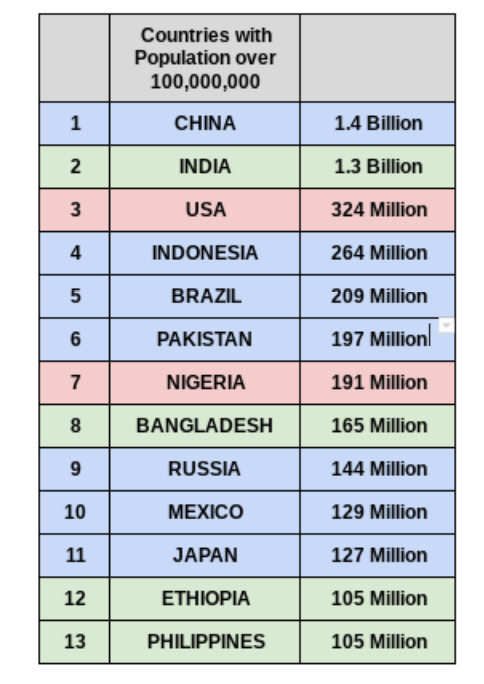This is based upon threat pooling. The social medical insurance design is also described as the Bismarck Model, after Chancellor Otto von Bismarck, who presented the first universal healthcare system in Germany in the 19th century. The funds generally contract with a mix of public and personal companies for the provision of a defined benefit bundle.
Within social medical insurance, a number of functions might be carried out by parastatal or non-governmental sickness funds, or in a few cases, by private health insurance coverage business. Social health insurance coverage is utilized in a number of Western European countries and increasingly in Eastern Europe along with in Israel and Japan.
Private insurance includes policies sold by business for-profit firms, non-profit business and community health insurance companies. Typically, private insurance coverage is voluntary in contrast to social insurance coverage programs, which tend to be obligatory. In some countries with universal coverage, private insurance often omits particular health conditions that are costly and the state healthcare system can supply coverage.
In the United States, dialysis treatment for end stage renal failure is usually paid for by government and not by the insurance coverage market. Those with privatized Medicare (Medicare Advantage) are the exception and should get their dialysis spent for through their insurance provider. However, those with end-stage kidney failure generally can not purchase Medicare Benefit strategies - which countries have universal health care.
The Preparation Commission of India has likewise suggested that the nation ought to welcome insurance coverage to attain universal health protection. General tax earnings is presently used to meet the necessary health requirements of all people. A particular form of personal health insurance that has frequently emerged, if financial danger defense mechanisms have just a limited impact, is community-based medical insurance.
Contributions are not risk-related and there is usually a high level of neighborhood involvement in the running of these strategies. Universal health care systems differ according to the degree of government participation in providing care or medical insurance. In some countries, such as Canada, the UK, Spain, Italy, Australia, and the Nordic nations, the federal government has a high degree of involvement in the commissioning or shipment of healthcare services and access is based upon home rights, not on the purchase of insurance.

In some cases, the health funds are originated from a mixture of insurance coverage premiums, salary-related compulsory contributions by staff members or employers to regulated illness funds, and by government taxes. These insurance coverage based systems tend to reimburse personal or public medical providers, often at heavily controlled rates, through mutual or openly owned medical insurance companies.

All About How Many Countries Have Universal Health Care
Universal health care is a broad idea that has been carried out in several methods. The common measure for all such programs is some kind of government action targeted at extending access to health care as widely as possible and setting minimum standards. Many implement universal healthcare through legislation, policy, and taxation.
Typically, some costs are borne by the client at the time of consumption, but the bulk of expenses come from a combination of compulsory insurance and tax earnings. Some programs are spent for totally out of tax earnings. In others, tax incomes are utilized either to money insurance for the extremely bad or for those requiring long-term chronic care.
This is a method of arranging the delivery, and designating http://ieturedrvo.nation2.com/some-known-factual-statements-about-what-is-home-h resources, of healthcare (and possibly social care) based on populations in a given location with a typical need (such as asthma, end of life, immediate care). Rather than concentrate on organizations such as healthcare facilities, medical care, neighborhood care and so on the system focuses on the population with a typical as a whole.
where there is health injustice). This technique motivates incorporated care and a more efficient use of resources. The UK National Audit Office in 2003 released a worldwide contrast of 10 various health care systems in ten developed nations, 9 universal systems versus one non-universal system (the United States), and their relative costs and crucial health outcomes.
In some cases, government involvement also consists of straight managing the healthcare system, however lots of countries use combined public-private systems to deliver universal health care. World Health Organization (November 22, 2010). Geneva: World Health Organization. ISBN 978-92-4-156402-1. Obtained April 11, 2012. " Universal health coverage (UHC)". Obtained November 30, 2016. Matheson, Don * (January 1, 2015).
International Journal of Health Policy and Management. 4 (1 ): 4951. doi:10.15171/ ijhpm. 2015.09. PMC. PMID 25584354. Abiiro, Gilbert Abotisem; De Allegri, Manuela (July 4, 2015). " Universal health protection from numerous point of views: a synthesis of conceptual literature and worldwide disputes". BMC International Health and Person Rights. 15: 17. doi:10.1186/ s12914-015-0056-9. ISSN 1472-698X.
PMID 26141806. " Universal health coverage (UHC)". World Health Organization. December 12, 2016. Retrieved September 14, 2017. Rowland, Diane; Telyukov, Alexandre V. (Fall 1991). " Soviet Healthcare From 2 Viewpoints" (PDF). Health Affairs. 10 (3 ): 7186. doi:10.1377/ hlthaff. 10.3.71. PMID 1748393. "OECD Reviews of Health Systems OECD Evaluations of Health Systems: Russian Federation 2012": 38.
What Is Single Payer Health Care? - An Overview
" Social well-being; Social security; Advantages in kind; National health schemes". The new Encyclopdia Britannica (15th ed.). Chicago: Encyclopdia Britannica. ISBN 978-0-85229-443-7. Recovered September 30, 2013. Richards, Raymond (1993 ). " Two Social Security Acts". Closing the door to destitution: the shaping of the Social Security Acts of the United States and New Zealand.
p. 14. ISBN 978-0-271-02665-7. Retrieved March 11, 2013. Mein Smith, Philippa (2012 ). " Making New Zealand 19301949". A succinct history of New Zealand (2nd ed.). Cambridge: Cambridge University Press. pp. 16465. ISBN 978-1-107-40217-1. Retrieved March 11, 2013. Serner, Uncas (1980 ). "Swedish health legislation: turning points in reorganisation because 1945". In Heidenheimer, Arnold J.; Elvander, Nils; Hultn, Charly (eds.).
New York: St. Look at this website Martin's Press. p. 103. ISBN 978-0-312-71627-1. Universal and extensive medical insurance was debated at intervals all through the Second World War, and in 1946 such a costs was voted in Parliament. For monetary and other reasons, its promulgation was delayed up until 1955, at which time protection was encompassed consist of drugs and illness payment, as well.
( September 1, 2004). " The developmental well-being state in Scandinavia: lessons to the establishing world". Geneva: United Nations Research Institute for Social Development. p. 7. Recovered March 11, 2013. Evang, Karl (1970 ). Health services in Norway. English variation by Check out the post right here Dorothy Burton Skrdal (3rd ed.). Oslo: Norwegian Joint Committee on International Social Policy.
23. OCLC 141033. Because 2 July 1956 the whole population of Norway has been included under the required health nationwide insurance program. Gannik, Dorte; Holst, Erik; Wagner, Mardsen (1976 ). "Primary healthcare". The national health system in Denmark. Bethesda: National Institutes of Health. pp. 4344. hdl:2027/ pur1.32754081249264. Alestalo, Matti; Uusitalo, Hannu (1987 ).
In Flora, Peter (ed.). Development to limits: the Western European well-being states because World War II, Vol. 4 Appendix (summaries, bibliographies, tables). Berlin: Walter de Gruyter. pp. 13740. ISBN 978-3-11-011133-0. Recovered March 11, 2013. Taylor, Malcolm G. (1990 ). "Saskatchewan treatment insurance coverage". Guaranteeing nationwide health care: the Canadian experience. Chapel Hill: University of North Carolina Press.
96130. ISBN 978-0-8078-1934-0. Maioni, Antonia (1998 ). " The 1960s: the political fight". Parting at the crossroads: the development of medical insurance in the United States and Canada. Princeton: Princeton University Press. pp. 12122. ISBN 978-0-691-05796-5. Obtained September 30, 2013. Kaser, Michael (1976 ). "The USSR". Healthcare in the Soviet Union and Eastern Europe.